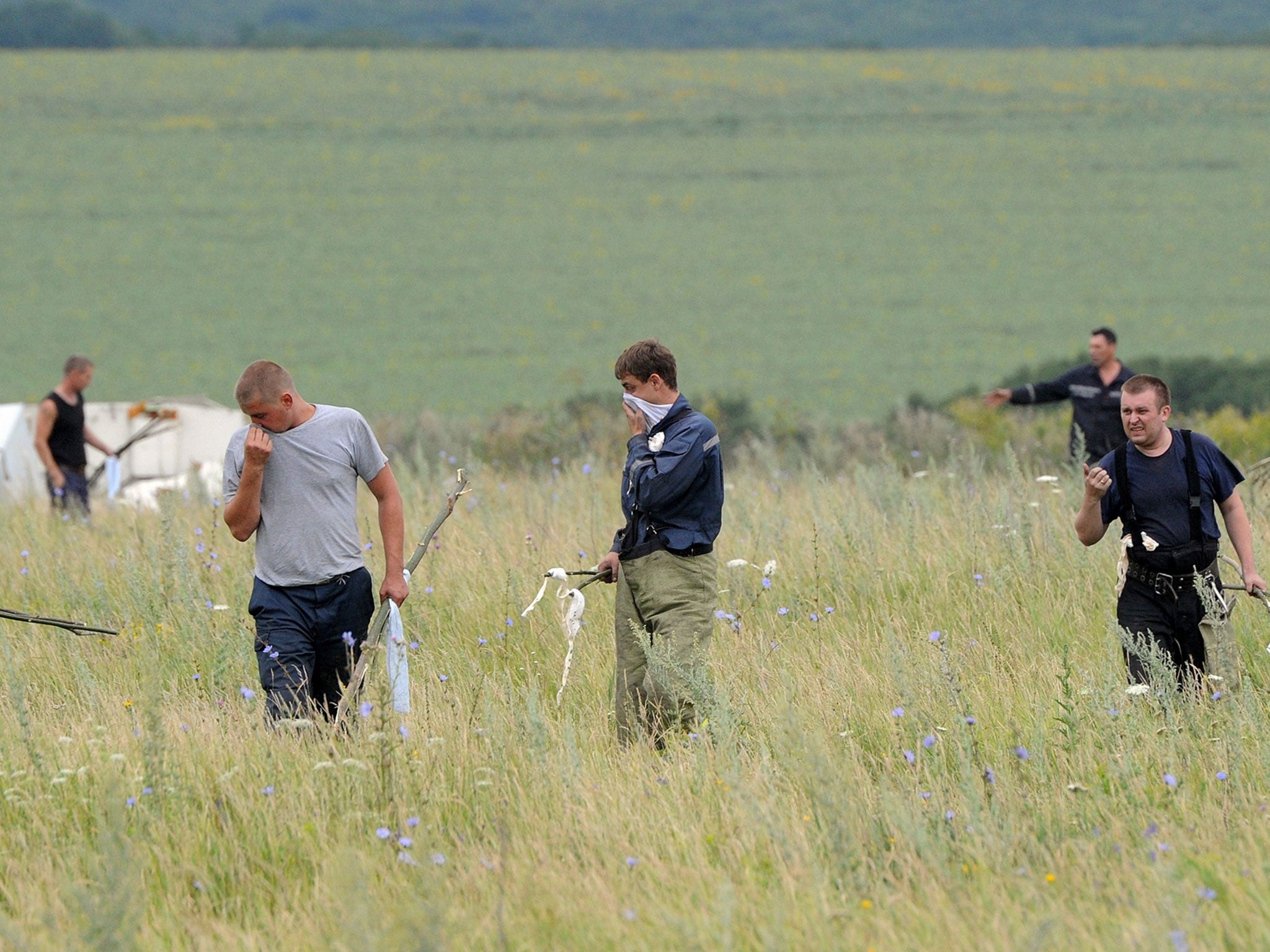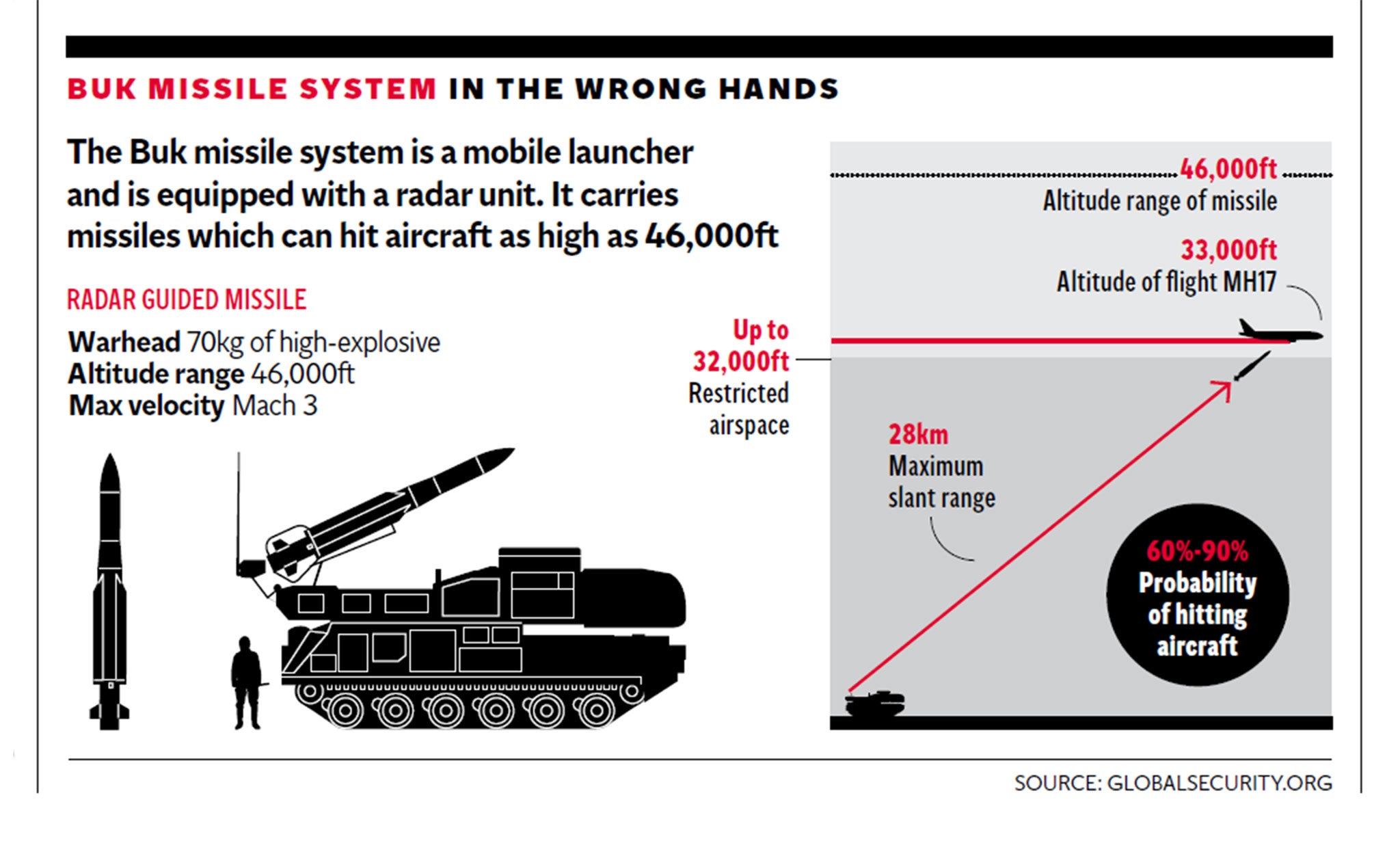Malaysia Airlines MH17 crash analysis: A tragic lesson of advanced weapons in the wrong hands
The SA-11 system which was used to shoot down MH17 is a Russian-built, heavy anti-aircraft missile launcher

The tragic destruction of Malaysia Airlines flight MH17 was a sadly predictable result of Russia supplying the powerful and long-ranged SA-11 “Buk” surface to air missile systems to separatists in eastern Ukraine who had no access to state air traffic control information.
The SA-11 system which was used to shoot down MH17 is a Russian-built, heavy anti-aircraft missile launcher coupled to a phased-array radar on a tracked chassis.
It is designed to engage military aircraft and missiles at altitudes of up to 72,000ft. It is in service with the Russian and Ukrainian armed forces, as well as other forces around the world.
In recent days, there have been multiple sightings of SA-11 systems in separatist hands near Donetsk reported on social media. This is close to where the airliner was shot down. On Monday 14 July, separatists shot down a Ukrainian Air Force An-26 military transport aircraft which was flying at above 22,000ft.
This incident signalled a significant rise in the anti-aircraft capabilities of the separatists since, up until this week, the only anti-aircraft missile systems seen in their possession were man-portable air defence systems (Manpads) such as SA-18 and SA-24 which are not capable of hitting aircraft flying above 19,500ft. As well as being incapable of engaging high-altitude targets, they are of limited use against the armoured Su-25 attack jets deployed by the Ukrainian Air Force.
After recent separatist defeats around Slavyansk, Russia evidently decided to supply their allies in eastern Ukraine with the much more powerful SA-11 system to check the advance of the Ukrainian anti-terror operation, which has been making heavy and increasing use of air power.
Almost certainly what occurred on Thursday was that separatists targeted what they assumed to be another An-26 transport flying at high altitude and shot it down using the same SA-11 systems employed earlier in the week. As the story broke, separatist social media accounts boasted of shooting down another An-26, only for these posts to be swiftly removes as it became clear an airliner was missing, and separatist leaders realised what they had actually hit.
The SA-11 system usually includes several launch vehicles and a command vehicle with a larger radar array, to coordinate the targeting of the launch vehicles. However, only the launch vehicles have been seen in eastern Ukraine. This means that the system used to bring down MH-17 was most likely being operated using the smaller integrated radar on the launch vehicle itself, and possibly by separatists unfamiliar with its specific functionalities.
Given that there seems to be little doubt that an SA-11 system was used to shoot down MH17, the question must now be who is responsible. Russian and separatist claims that the Ukrainian military is responsible are absurd. The Ukrainian military has absolutely no reason to have deployed their SA-11’s anywhere near Donetsk as the separatists do not use aircraft and shooting down a Russian aircraft violating its airspace is that last thing that Kiev wants.
Given the strength of reaction from Moscow over a single artillery shell which landed on the Russian side of the border last week, and the fears over direct Russian military intervention in eastern Ukraine, Ukrainian forces are being extremely careful to avoid actions which could give a pretext for Russian retaliation. However, the separatists have been shooting down aircraft over eastern Ukraine for weeks using surface to air missiles.

This is simply a tragic case of incorrect target selection by separatists using a weapons system which was much more powerful than previously seen in the conflict, and capable of reaching MH-17 and 33,000ft.
Unlike state operators of the system who are linked to national air traffic control networks, the separatists in Donetsk had no information about international flights and probably did not consider the possibility.
This is exactly why the international community has up to now been very careful to avoid non-state actors acquiring advanced anti-aircraft missile systems such as the SA-11 which Russia supplied to its proxies in Donetsk this week.
Justin Bronk is a military services research analyst at Royal United Services Institute
Join our commenting forum
Join thought-provoking conversations, follow other Independent readers and see their replies
Comments
Bookmark popover
Removed from bookmarks